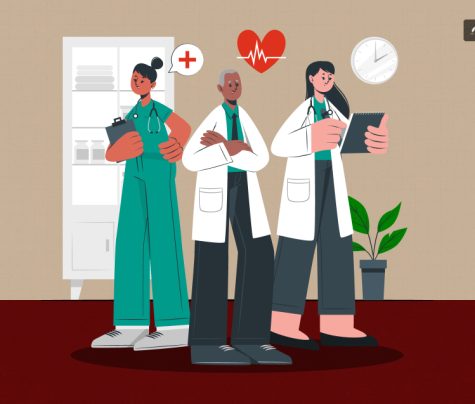
Medical negligence cases, once relatively straightforward claims of malpractice, have grown increasingly complex over the past few decades.
Higher patient expectations, specialized treatments, and shifting legal standards all factor into how these suits are filed and argued.
According to a 2023 National Malpractice Trends Report, medical negligence claims have risen by 25% over the last ten years, a surge many attribute to heightened awareness of patient rights and evolving healthcare protocols.
Below, I will explore the key ways in which medical negligence cases have changed and how lawyers have adapted their strategies to secure fair compensation for their clients.
The Changing Face of Medical Negligence
One of the biggest shifts in these cases is the variety of claims now falling under the medical negligence umbrella.
Beyond surgical errors or misdiagnoses, modern suits increasingly involve newer areas like telehealth oversight or electronic record-keeping mishaps.
These expanded claim types demand a broader understanding of how technology intersects with standard patient care.
A 2022 Digital Healthcare Liability Survey found that 16% of malpractice filings cited errors tied to e-prescriptions or digital patient monitoring, indicating how quickly technology can complicate accountability.
Lawyers must keep pace by learning the nuances of these systems, often consulting industry experts to build robust arguments in fields where legal precedent is still emerging.
Rising Expectations from Jurors and Clients

Over time, jurors, patients, and families have developed higher standards for healthcare outcomes, partly due to media coverage of high-profile negligence cases and a general rise in consumer rights awareness.
Even minor slip-ups may prompt legal actions if they’re seen as systemic failures rather than isolated incidents.
As a result, clients now expect their legal teams to work with forensic detail—investigating hospital protocols, verifying staff credentials, and reconstructing entire treatment timelines.
A 2023 Consumer Trust in Healthcare Study indicated that nearly 40% of patients feel more confident filing suits now than they did a decade ago, underscoring the growing readiness to pursue legal recourse for perceived lapses in care.
Key Shifts Lawyers Must Address
Below are a few major areas where law firms have had to adapt:
- Technology Expertise: Understanding electronic medical records, e-prescriptions, and telemedicine platforms.
- Multidisciplinary Teams: Collaborating with medical specialists or IT professionals to decipher evidence.
- Stricter Evidence Standards: Gathering digital footprints, server logs, or detailed charts to prove malpractice or negligence.
- Heightened Client Communication: Managing expectations by clarifying both the legal process and realistic outcomes.
- Broader Research: Investigating institutional practices, staff training, and even insurance relationships that might show systemic faults.
Lawyers well-versed in these dynamics provide more targeted guidance and make persuasive cases in court, advocating effectively for the injured party.
Leveraging Expert Witnesses and New Techniques
Modern medical negligence cases often hinge on testimony from specialists who explain complex treatment procedures or alleged failures in layperson’s terms.
While expert witnesses were always a component of malpractice litigation, attorneys today dig deeper into a witness’s background to ensure credibility—be it from academic credentials, peer-reviewed publications, or hands-on clinical experience.
Additionally, new forensics tools enable lawyers to examine digital logs or conduct advanced imaging reviews to confirm or refute claims.
A 2022 Medical-Forensic Advances Poll showed that firms employing data-driven investigative methods had a 30% higher success rate in proving negligence, reflecting the potency of specialized technology in building solid arguments.
Finding Reliable Resources for Medical Negligence Research
Amid the complexities of modern malpractice cases, identifying trusted information sources is critical for constructing a strong argument.
Various legal and medical associations publish detailed guidelines on current negligence standards, often breaking down typical pitfalls in patient care or newly recognized claim types.
Specialist websites and peer-reviewed medical journals also shed light on emerging areas—like telehealth oversight or digital record-keeping—where precedents may be less established.
For lawyers, subscribing to legal database platforms or joining professional networks focused on health law can reveal recent rulings and best practices.
A 2022 Healthcare Law Insights Survey found that law firms who regularly tapped into legal and medical journals were 25% more successful in substantiating malpractice claims.
This highlights how cross-referencing multiple, high-quality resources can prove vital in a rapidly evolving field.
There are some excellent websites with up-to-date information, such as www.medicalnegligencesolicitorsukco.co.uk where current news and information on statistics are usually readily available.
The Role of Client Education
Amid these developments, attorneys often invest time in counseling clients on how the legal terrain has changed. Cases may take longer now due to the abundance of data or the need for multiple expert opinions.
Moreover, settlement discussions might revolve around intangible impacts like emotional distress or diminished quality of life, requiring thorough documentation to justify larger compensation figures.
By outlining the potential hurdles—like insurance pushback or court backlogs—lawyers manage client expectations and highlight when alternative resolution methods, such as mediation, may expedite results without a drawn-out trial.
Hope for a Better Future?
Medical negligence cases have evolved into multi-faceted lawsuits demanding high-level expertise across disciplines.
No longer confined to basic malpractice, these claims can involve intricate technology usage, complex institutional protocols, and increasingly informed juries demanding robust evidence.
Lawyers, in turn, have strengthened their research methods, collaborated with experts in emerging healthcare tech, and communicated more comprehensively with clients to shape realistic but forceful claims.
As data-driven strategies and innovative forensics continue to gain traction, the pursuit of legitimate compensation in medical negligence litigation becomes more navigable—provided attorneys and claimants stay current with the latest industry trends and legal precedents.
Read Also:
- 8 Fascinating Aspects of Medical Testimony that will Surprise You!
- Proving Negligence in a Wrongful Death Case: Key Evidence Needed
- Paul Mackoul MD Lawsuit: The Case That Taught Us About Patient’s Rights and Accountability in Healthcare











0 Reply
No comments yet.